Nasa’s Orion spaceship makes splashdown
- Published
Nasa put up a drone to watch Orion drop down into the Pacific Ocean
The US space agency's new Orion crew capsule has completed its maiden, unmanned voyage with a splashdown in the Pacific Ocean off Mexico.
Drone video sighted the ship descending gently on its parachutes, shortly before it hit the water.
US Navy support vessels, with the help of divers, moved in swiftly to recover the floating spacecraft.
Orion is designed eventually to take humans beyond the space station, to destinations such as the Moon and Mars.
Its brief 4.5-hour flight was intended to test its critical technologies, like the heat shield and those parachutes.
Commentators on Nasa's television channel said the craft had made a "bulls-eye" splashdown.
"There's your new spacecraft, America,'' mission control commentator Rob Navias said as the Orion capsule neared the water.
Mark Geyer, the agency's Orion programme manager commended a near-flawless outing, telling reporters later: "It's hard to have a better day than today."
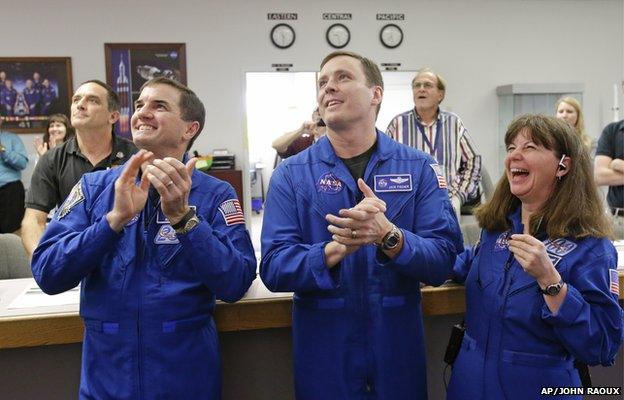
Nasa astronauts and journalists watched the landing from the Kennedy Space Center

Orion was launched on a Delta IV-Heavy rocket from Cape Canaveral in Florida at 07:05 local time (12:05 GMT).
The orange-coloured triple booster was quickly lost in cloud after clearing the pad but headed effortlessly east out over the Atlantic for a two-lap circuit of the Earth.
It was on the second of those two orbits that the Delta's upper-stage took Orion up to an altitude of 6,000km, to set up a fast fall back to the planet.
Nasa's chief scientist Ellen Stofan says the road to Mars requires many more technologies
The capsule was expected to attain speeds close to 30,000km/h as it entered the atmosphere, with the pressing air likely to have generated temperatures on the ship's underside of up to 2,000C.
This was one of the key aims of the mission - to see how Orion's thermal protection systems would perform.
Engineers will know more when the capsule is recovered and returned to land for inspection.
Orion is reminiscent of the Apollo command ships that took men to the Moon in the 60s and 70s, only bigger and with cutting-edge systems.
It is being developed alongside a powerful new rocket that will have its own debut in 2017 or 2018.
Together, they will form the core capabilities needed to send humans beyond the International Space Station.
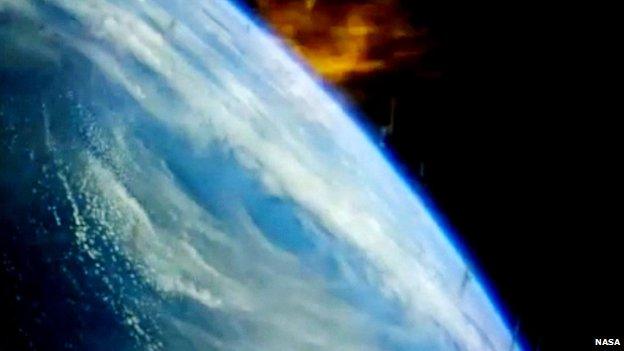
Video cameras onboard the spacecraft captured views of the Earth and the heat of re-entry
Friday's mission is but one small step in a very long development programme.
Unable to call upon the financial resources of the Apollo era, Nasa is instead having to take a patient path.
Even if today it had a fully functioning Orion, with its dedicated rocket, the US space agency would not be able to mount a mission to another planetary body because the technologies to carry out surface operations have not been produced yet, and it could be the 2030s before we see them all - certainly, to do a Mars mission.
To go to the Red Planet would require transfer vehicles, habitation modules, and effective supply and communication chains. And fundamental to the outcome of the whole venture would be a descent/ascent solution that enabled people to get down safely to the surface and then get back up again to make the journey home.
The Delta IV-Heavy rocket roared off the pad at Cape Canaveral
Nasa's chief scientist Ellen Stofan told the BBC: "We have all these technologies mapped out and we're asking, 'what is the most sustainable path we can get on (to acquire them)?' And when I say 'we', I don't just mean the United States because it's not just Nasa that's thinking about this; it's all the space agencies around the world."
To that end, the European Space Agency has been asked to provide the "back end" for all future Orion capsules.
This service module is principally the propulsion unit that drives Orion through space.
Nasa says it is open to similar contributions from other partners as well.
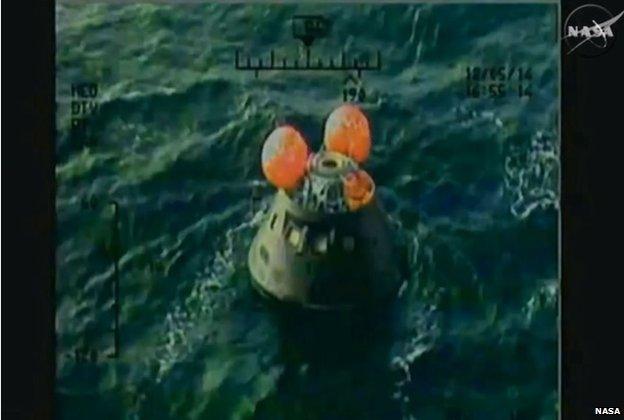
The capsule hit the Pacific Ocean within seconds of its scheduled arrival time
Nonetheless, some commentators, like the respected historian John Logsdon, are worried that the policy as laid out cannot continue in its current guise.
"The first Orion launch with a crew aboard is 2020/21, and then nothing very firmly is defined after that, although of course Nasa has plans. That's too slow-paced to keep the launch teams sharp, to keep everyone engaged. It's driven by the lack of money, not the technical barriers," he said.
But there is no doubting the enthusiasm within Nasa for the Orion project.
Rex Waldheim flew on the very last shuttle mission in 2011, and is now assisting the design of the capsule's interior systems.
He told BBC News: "The people that are actually going to fly in Orion - I just can't imagine the thrill they're going to have when they sit here at the Kennedy Space Centre atop the rocket, ready to go to the Moon or to Mars or an asteroid - these incredible destinations. It's just going to be spectacular."
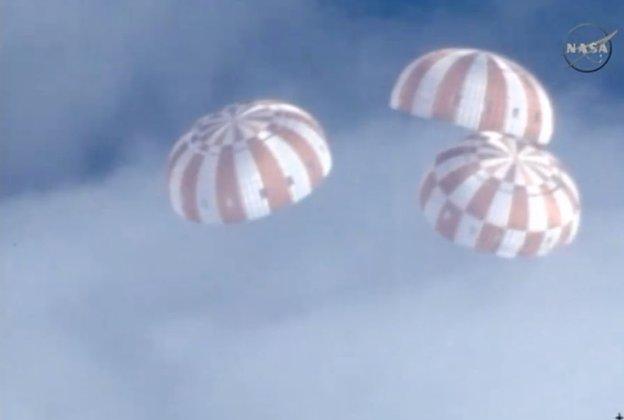
Three big parachutes lowered Orion into the water
Jonathan.Amos-INTERNET@bbc.co.uk and follow me on Twitter: @BBCAmos, external
- Published5 December 2014
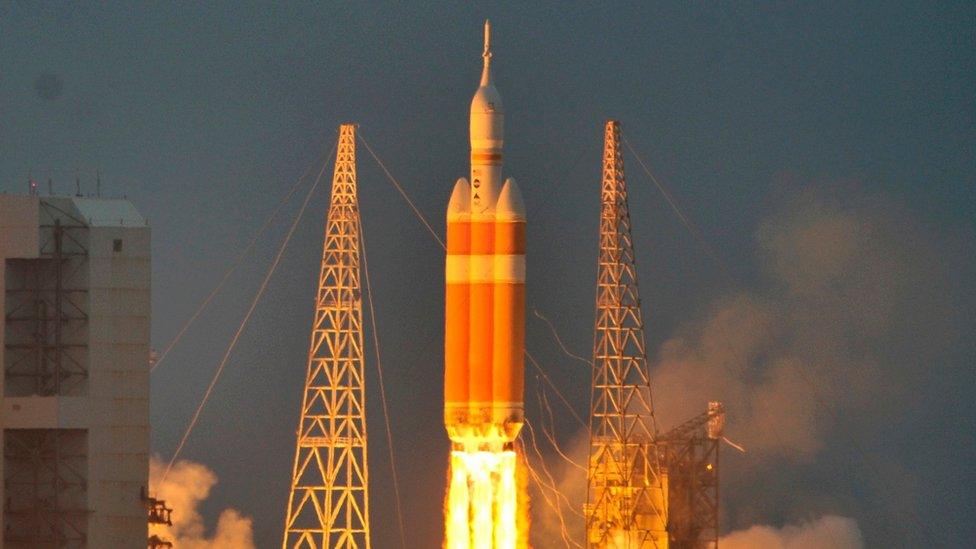
- Published5 December 2014
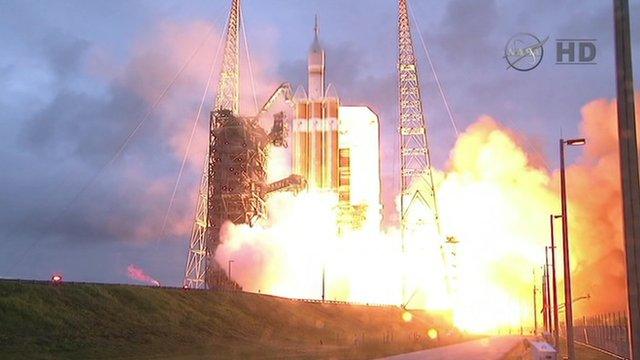
- Published4 December 2014
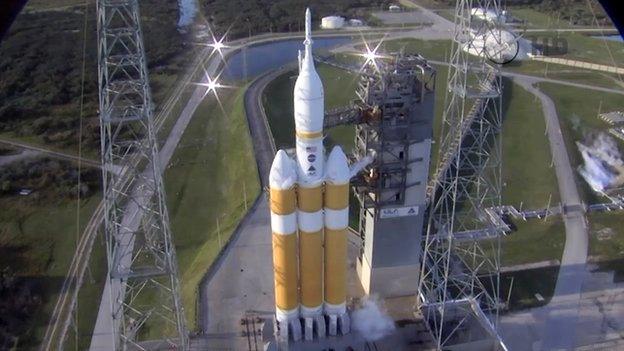
- Published18 November 2014
